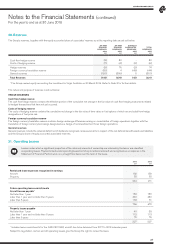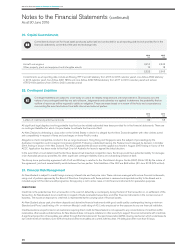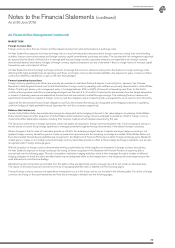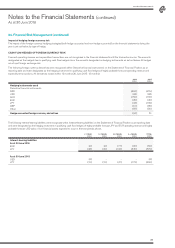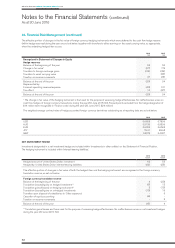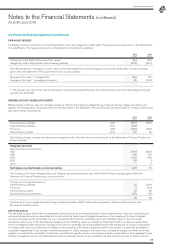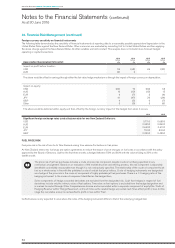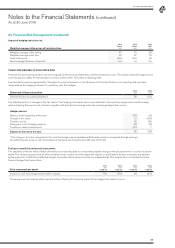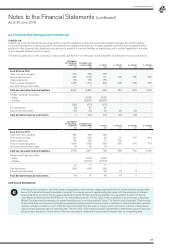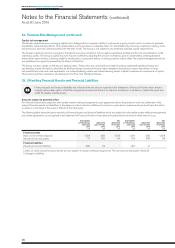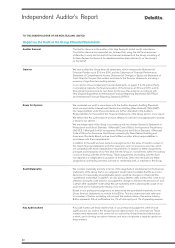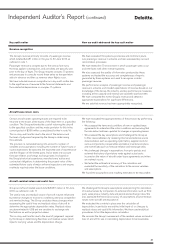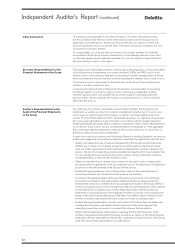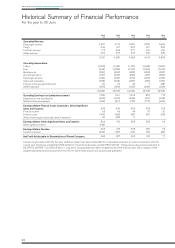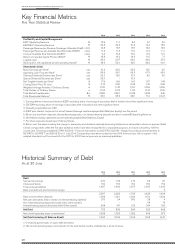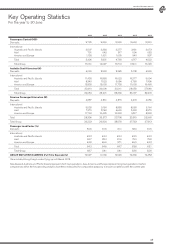Air New Zealand 2016 Annual Report Download - page 39
Download and view the complete annual report
Please find page 39 of the 2016 Air New Zealand annual report below. You can navigate through the pages in the report by either clicking on the pages listed below, or by using the keyword search tool below to find specific information within the annual report.
Notes to the Financial Statements (continued)
As at 30 June 2016
37
AIR NEW ZEALAND GROUP
24. Financial Risk Management (continued)
Liquidity risk
Liquidity risk is the risk that the Group will be unable to meet its obligations as they fall due. Air New Zealand manages the risk by targeting
a minimum liquidity level, ensuring long-term commitments are managed with respect to forecast available cash inflow and managing maturity
profiles. Air New Zealand holds significant cash reserves to enable it to meet its liabilities as they fall due and to sustain operations in the event
of unanticipated external factors or events.
The following table sets out the contractual, undiscounted cash flows for non-derivative financial liabilities and derivative financial instruments:
STATEMENT
OF FINANCIAL
POSITION
$M
CONTRACTUAL
CASH FLOWS
$M
< 1 YEAR
$M
1-2 YEARS
$M
2-5 YEARS
$M
5+ YEARS
$M
As at 30 June 2016
Trade and other payables
Secured borrowings
Unsecured bonds
Finance lease obligations
Amounts owing to associates
453
930
150
1,487
1
453
1,003
155
1,619
1
453
101
155
244
1
-
105
-
209
-
-
235
-
588
-
-
562
-
578
-
Total non-derivative financial liabilities 3,021 3,231 954 314 823 1,140
Foreign exchange derivatives
– Inflow
– Outflow
2,030
(2,087)
2,030
(2,087)
-
-
-
-
-
-
Fuel derivatives
Interest rate derivatives
(52)
58
(5)
(57)
47
(5)
(57)
47
(1)
-
-
(2)
-
-
(2)
-
-
-
Total derivative financial instruments 1 (15) (11) (2) (2) -
STATEMENT
OF FINANCIAL
POSITION
$M
CONTRACTUAL
CASH FLOWS
$M
< 1 YEAR
$M
1-2 YEARS
$M
2-5 YEARS
$M
5+ YEARS
$M
As at 30 June 2015
Trade and other payables
Secured borrowings
Unsecured bonds
Finance lease obligations
Amounts owing to associates
448
512
150
1,660
18
448
562
166
1,823
18
448
54
10
238
18
-
51
156
251
-
-
147
-
615
-
-
310
-
719
-
Total non-derivative financial liabilities 2,788 3,017 768 458 762 1,029
Foreign exchange derivatives
– Inflow
– Outflow
2,090
(2,013)
2,090
(2,013)
-
-
-
-
-
-
Fuel derivatives
Interest rate derivatives
87
(22)
-
77
(26)
-
77
(26)
(2)
-
-
(1)
-
-
3
-
-
-
Total derivative financial instruments 65 51 49 (1) 3 -
FAIR VALUE ESTIMATION
All financial instruments for which fair value is recognised or disclosed are categorised within the fair value hierarchy as described
below. All financial instruments are either carried at fair value or amounts approximating fair value, with the exception of interest-
bearing liabilities, for which the fair value is disclosed in Note 15 Interest-bearing liabilities. This equates to “Level 2” of the fair
value hierarchy defined within NZ IFRS 13 - Fair Value Measurement. The fair value of the investment in quoted equity instrument
(Note 9) is determined by reference to quoted market prices in an active market (“Level 1” of the fair value hierarchy). The fair value
of derivative financial instruments is based on published market prices for similar assets or liabilities or market observable inputs to
valuation at balance date (“Level 2” of the fair value hierarchy). The fair value of foreign currency forward contracts is determined
using forward exchange rates at reporting date. The fair value of fuel swap and option agreements is determined using forward fuel
prices at reporting date. The fair value of interest rate swaps is determined using forward interest rates as at reporting date.


